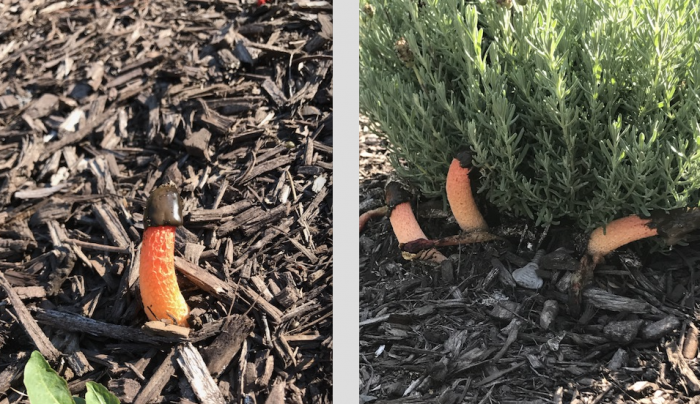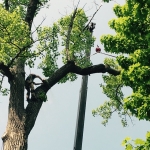What is this? and how can I get rid off it?
It is a stinkhorn fungus.
I poured baking soda... they came back.
I poured vinegar...they came back.
I poured boiling water...they came back.
I poured bleach...they came back.
I have been digging them out and discovered that for each one that sprouts, there are about a half dozen bulbs growing. So whenever I discover one, I dig it out along with a square foot area and take out as much as the bulbs/eggs I see. They're still coming out but I think I'm winning this war.
There's a groundskeeping theory (D got this from a Koori ranger when he was researching sustainable rural business models) that the more you fiddle with lawn/pasture plant pests, the more entrenched they become.
They've bred to overcome environmental resistance, whether that's animals stomping on them, chomping on them, other plants trying to crowd them out, floods, fires, poor soils etc. Bad smells and tastes are to keep animals away (often signify a substance to poison to make you sick). If you dig or disturb the plants, you'll dislodge spores and roots - a survival system developed designed for emergency dispersal. Anything else makes these fungi basically hibernate for a bit, then when conditions are better they revive.
So: you can leave them and let them eventually die out as birds and natural predators (raccoons? Nematodes? Deer?) get them. You could heavily salt the soil where they are, and also affect the other plants around them. You could replace all the mulch and topsoil, at great expense, and risk getting another garden issue. You could bring professional garden help, also at some expense, that might take several visits and might also cost other plants as you alter the micro environment of this part of your garden to discourage growth. (Needing a sunnier, more desert landscape).....
Probably best to leave it. I had some of what appears to be 'dog vomit fungus' (fuligo septica, is my best guess) crop up in my garden. My the time I got to it it was apparently in the 'aethalium' stage, which I discovered is basically just a giant spore bag. I discovered that by trying to get rid of it and then noticing the spores floating in the air, so I'm pretty sure I made things worse than what would have happened if I'd had let nature release them naturally. Of course, I then tried to clean up the spores and put them and some surrounding dirt in a box and threw the dirt out. So now instead of the spores just ending up in the vicinity of my garden they're now at the South Orange Recycling Center and with South Orange Waste Management. When South Orange turns into a giant sporebag, it's all my fault!
Turns out the only real downside to dog vomit fungus is that it's fascinating, so if you get some you'll waste time on the Internet reading about it. Turns out it's not really a fungus (more like a group of amoebas) and it's good at solving mazes and planning national highway systems. So if a sporebag ends up designing a better transportation system, that's my fault too!
"isn't Nature wonderful?"  {like the discovery that dragonfly wings shred bacteria, so new antibiotics might be made from nanotech that replicates this}
{like the discovery that dragonfly wings shred bacteria, so new antibiotics might be made from nanotech that replicates this}
Earlier this summer, I had one out in front of my house on the berm by the street. It disappeared pretty quickly, but I don't know if it was eaten or just reached the end of its lifespan or met some other end. I'll be interested to see if any more come up in that spot. I had never seen one before that.
For Sale
Sponsored Business
Promote your business here - Businesses get highlighted throughout the site and you can add a deal.
























This weird looking thing is growing around my lavender plants. The area is properly mulched and it gets plenty of sun. I have never seen this before. Any ideas?